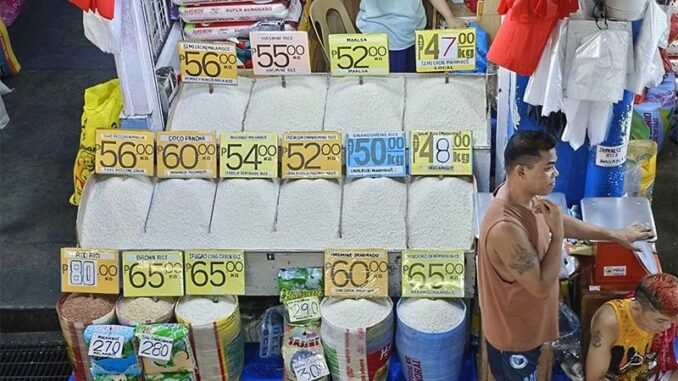
MANILA, Philippines — The country’s rice imports have breached the three million metric ton (MT) mark as of mid-September, according to the Bureau of Plant Industry.
BPI data showed that total rice imports as of Sept. 12 reached 3.01 million MT, 12.4 percent higher than the 2.68 million MT recorded volume from January to September last year.
Of the total volume, around 673,178 MT entered the country at a lower tariff rate of 15 percent, which took effect in July, according to BPI data.
Most of the rice imports during the reference period or about 2.63 million MT came from Vietnam, which has been the country’ top rice supplier.
Agriculture Secretary Francisco Tiu Laurel Jr. has maintained his estimates that retail rice prices would begin to soften next month once the old stocks brought in by importers at a higher rate of 35 percent have been sold and replaced with the newer stocks.
Tiu Laurel said that the full impact of the rice tariff cut could be felt by January next year once a significant volume of new imports has entered the market and demand has stabilized.
“But since demand for food usually spikes in December, we anticipate seeing a more substantial drop in rice prices by January,” he said.
From Sept. 1 to 12 alone, the BPI issued 508 sanitary and phytosanitary import clearances (SPSICs) for the importation of 416,677 MT of rice.
SPSIC is a required document to allow imported commodities to enter the country, certifying that the shipment complies with food safety standards and is safe to human, animal and plant health.
Agriculture officials have noted that there was a slowdown in rice import arrivals following the anticipation of the implementation of the lower tariff rate.
Since July, monthly average rice imports have dropped to a little over 250,000 MT, nowhere near the average monthly import arrival of 400,000 MT in the first half.
“It wasn’t until August that we saw a significant increase in import volumes to 385,000 MT,” Tiu Laurel said.
Aside from the need to dispose of the old stocks, rice traders and importers have revealed that some players are facing supply contract cancellation from key foreign suppliers who are seeking higher export prices.
Worse, Tiu Laurel disclosed recently that there have been delays in the release of some rice shipments from Manila ports, resulting in supply concerns.
The Philippine Ports Authority (PPA) confirmed that there are some 888 containers with an estimated volume of 24,000 MT of rice at the Port of Manila waiting to be picked up by their importers.
Jay Santiago, PPA general manager, is not discounting the possibility that rice traders are intentionally keeping the shipments at the ports because they are waiting for rice prices to increase.
Certain quarters of the agriculture sector have voiced their growing frustration that the government’s promise of retail rice price reduction is not yet materializing two months after the tariff cut took effect.


Be the first to comment